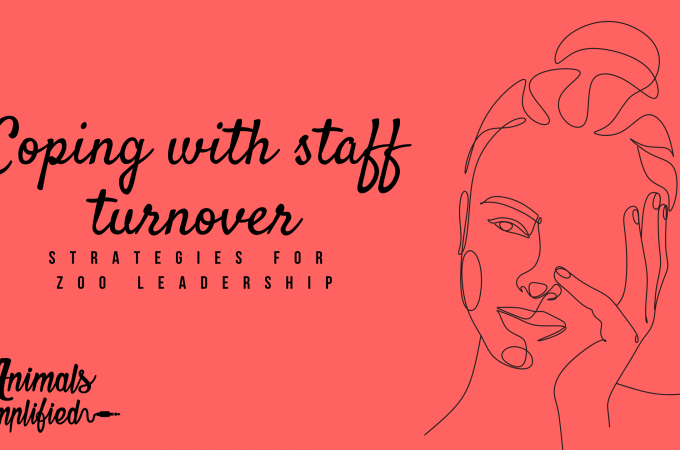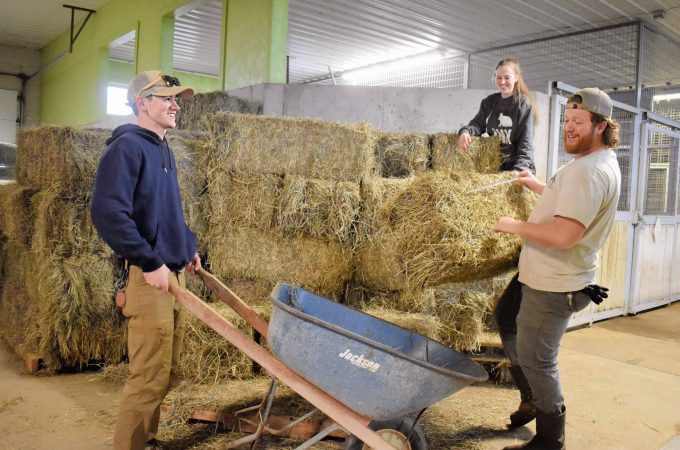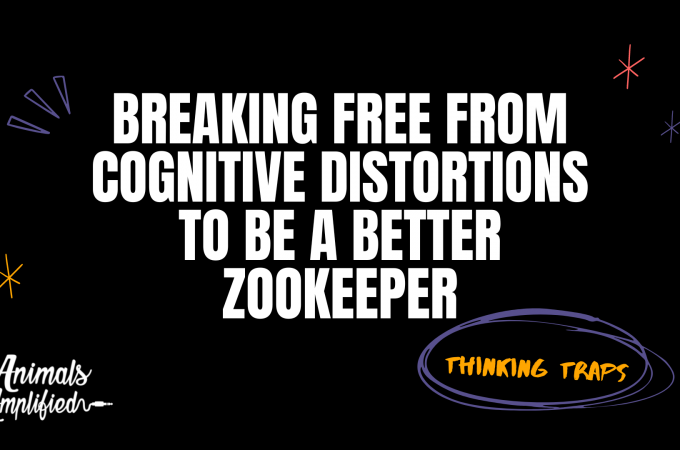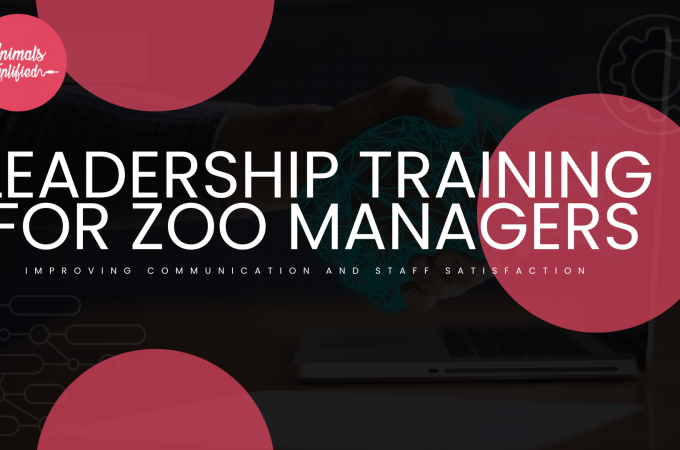
Effective Note-taking: How Managers Can Show They’re Listening and Address Concerns
I received the most AWESOME email recently. It started like this, “The zoo I work for, I feel, has great communication, and it has strengthed my relationship and trust in them over the years.” What a refreshing change of pace, right? I asked this keeper to elaborate on how managers can show they’re listening, and we got some great feedback!
As a manager, one of the most important skills you can possess is taking effective notes during meetings and conversations with your team. By doing so, you not only show your employees that you are actively listening to their concerns, but you also have a record of what was discussed and can take action on any issues. Let’s explore the benefits of effective note-taking and provide tips for how managers can show they’re listening from a front-line keeper.
3 Tips for How Managers Can Show They’re Listening
Many managers I chat with say they are listening. They hear their team’s concerns. They want to make things better. Their staff doesn’t always feel that way. Let’s learn how to not just say we’re listening but show we’re listening. Here are three practical tips directly from the front line and incorporate them into our lives as zoo leadership.
“During my 1×1 meeting with my direct manager, I usually have a list of things, and so does she. So I have the opportunity to ask or discuss anything and vice versa. She always takes notes during the meetings and forwards them to me by the end of that day. She is very easy to talk to and repeats back my interests/concerns, and often asks for further clarification. If any of our topics require discussion from higher up management, then she will take those to them and have responses for me by our next 1×1 or earlier.”
– Engaged and happy Senior Keeper
1. Effective Note-taking
The first thing our happy zookeeper points out is that she appreciates how her manager takes notes during her one-on-ones. Effective note-taking shows that you are actively engaged in the conversation and listening to what your employee is saying. It also helps to demonstrate that you value their input and take their concerns seriously.
Taking notes during a conversation provides a written record of what was discussed, allowing you to reference the conversation later. This is especially important when discussing complex or sensitive topics that require follow-up actions.
When I asked the TikTok community if they felt like a warning or second strike was threatening, the vast majority suggested having that difficult conversation but also providing a written follow-up. This ensures both parties are on the same page and provides a chance to address disparities if they are not.
By taking notes during multiple conversations with an employee, you can identify trends and patterns in their concerns or issues. Maybe you’ll notice that every time you meet, they have the same concerns about a particular co-worker. This can help you develop a plan to address these concerns and improve employee satisfaction.
Make sure you’re prepared to take good notes during your one-on-one conversations. Before a meeting or conversation, ensure you have the necessary tools to take notes. This can include a notebook, a laptop or tablet, or a voice recorder. Review the one-on-one template or notes from previous conversations to ensure you are up-to-date on the topic.
For a template, you and your team can use for these regular check-ins, read more here.
2. Listen Actively
The other way that our zookeeper says she knows her managers are listening to her concerns is that they ask questions. Active listening means you’re listening to understand where the person is coming from, not thinking about your response. It’s also important that you give them your full attention, avoiding distractions, and taking time to understand their perspective.
Using a structured format for your meetings can help you organize your thoughts and ensure you capture all relevant information. This can include creating an agenda or using a template with designated areas for key topics or concerns. One of my favorite techniques is to say, “what I’m hearing is…” and then I try to summarize the main points the team member is discussing.
In the notes, it’s important to focus on the key points of the conversation and not try to capture every detail. This can be overwhelming and result in notes that are difficult to read or understand. Instead, focus on the most important topics and concerns raised during the conversation.
If you are unclear about something the employee said, don’t be afraid to ask for clarification. This can help ensure that your notes and understanding are accurate and that you fully understand their perspective. During the conversation, I’ll repeat back their main concerns or points. For example, “I’m hearing that you feel like there is some hypocrisy happening by leadership, that you’re frustrated feeling like you’re being held to a different standard, and that you don’t feel like the good work you’re doing is noticed. Is that all?
3. Follow-up and Address Zookeeper Concerns
The last point our Senior Zookeeper makes is that her leadership remembers to follow up. “If any of our topics require discussion from higher-up management, then she will take those to them and have responses for me by our next 1×1 or earlier.” To do this effectively, it’s important to summarize the key points and any actions that need to be taken at the end of the meeting. This helps to ensure that you and the employee are on the same page and that any follow-up actions are clear.
After the conversation, review your notes and identify key takeaways or follow-up actions. This may include scheduling another meeting, delegating tasks to other team members, or taking action on an issue raised during the conversation. This is a great opportunity to follow up via email with a meeting summary and transfer the to-dos to whichever project management or list-making system your team uses.
It’s also important to note that this keeper didn’t say her leadership solves her problems or can address zookeeper concerns in the meeting. How managers can show they are listening is to not answer or respond right away. Spend time thinking about the keeper’s concerns and requests and follow up later with a thoughtful response. Most employees don’t mind being told “no” as long as they feel their concerns were considered.
Lastly, remember that you aren’t solving problems for your team. You should be solving problems with your team. Once you’ve made it clear by taking notes and listening actively that you understand their concerns, keep asking questions.
- “What are some solutions you’ve come up with?”
- “What does it look like in a perfect world?”
- “How can I help you solve this challenge?”
- “What does it look like if you were great right now?”
All of these questions encourage personal accountability and ownership. Coaching employees doesn’t mean that you’re the fixer.
Improve Culture. It’s as Simple as Listening.
Effective note-taking is a critical skill for managers to develop. It demonstrates active listening, provides a record of the conversation, and helps identify trends and patterns in employee concerns. By being prepared, using a structured format, focusing on key points, and summarizing and following up on conversations, managers can improve their note-taking skills and show their employees that they are actively engaged in their concerns and committed to addressing them.
“During our full department meetings, there is always one manager taking notes and sends that out as well by the end of the day in case anyone was absent. We often are given time during these meetings to ask anything we want and offer any ideas even if they are as we call it, shooting for the stars.”
Inspired Senior Keeper
I loved this idea of “shooting for the stars.” I call it having a “yes” meeting. We practice this in our Strong Teams Build Strong Trainers workshop and Beyond Animal Training course. Good ideas are often hiding behind the fear of rejection, but when we get into the regular habit of embracing all ideas and “shooting for the stars,” great ideas bubble to the surface.
Our teams want to know they have some autonomy and control over their daily lives. The best way we can do that is to SHOW them we are listening. Once we show we are seeking to understand, it is easier for zoo leadership to take action to improve culture. When we work with our teams to improve culture, we also reduce turnover and improve animal welfare.
For more on coaching zookeepers using one-on-ones, read here.





